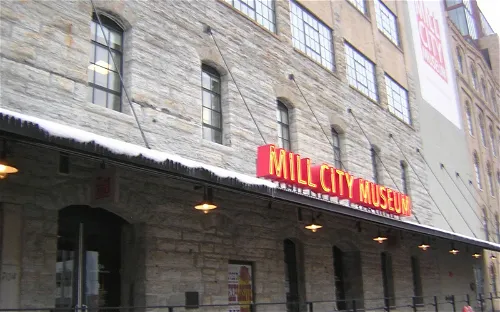Mill City Museum and its collection
In 1878, the mill complex was destroyed by an explosion that killed 18 people. Despite this tragic event, the mill was later rebuilt and continued to operate until 1965. Today, the Mill City Museum stands as a testament to the resilience and industrial spirit of the city.
The Mill City Museum Today
Today, the former Washburn A Mill functions as the Mill City Museum, a historical museum dedicated to the local milling industry. Visitors can learn about the history of milling, see examples of the machinery used to grind wheat grains into flour, and understand the jobs performed on the eight floors of the mill.
National Recognition of the Mill
In May 1983, the mill complex was listed as a Historic District in the National Register of Historic Places and simultaneously received the status of a National Historic Landmark. This recognition underscores the national significance of the mill and its contribution to the industrial history of the United States.
History & Anthropology Science & Technology Industrial heritage Historic house
#4 History & Anthropology in Minneapolis #1 Science & Technology in Minneapolis #3 Historic houses in Minneapolis #1 Industrial & heritage museums in Minneapolis #8 History & Anthropology in Minnesota #3 Science & Technology in Minnesota #6 Historic houses in Minnesota #2 Industrial & heritage museums in Minnesota #132 Industrial & heritage museums in United States

